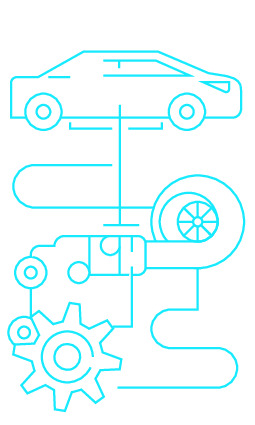|
|
|
| Module code: FT17 |
|
|
3V+1U (4 hours per week) |
|
4 |
| Semester: 3 |
| Mandatory course: yes |
Language of instruction:
German |
Assessment:
Written exam 90 min.
[updated 30.09.2020]
|
FT17 (P242-0038, P610-0337, P610-0434) Automotive Engineering, Bachelor, ASPO 01.10.2011
, semester 3, mandatory course
FT17 (P242-0038, P610-0337, P610-0434) Automotive Engineering, Bachelor, ASPO 01.10.2015
, semester 3, mandatory course
FT17 (P242-0038, P610-0337, P610-0434) Automotive Engineering, Bachelor, ASPO 01.04.2016
, semester 3, mandatory course
FT17 (P242-0038, P610-0337, P610-0434) Automotive Engineering, Bachelor, ASPO 01.10.2019
, semester 3, mandatory course
|
60 class hours (= 45 clock hours) over a 15-week period.
The total student study time is 120 hours (equivalent to 4 ECTS credits).
There are therefore 75 hours available for class preparation and follow-up work and exam preparation.
|
Recommended prerequisites (modules):
FT01 Engineering Mathematics I
FT04
FT05 Engineering Mathematics II
FT09
[updated 03.07.2014]
|
Recommended as prerequisite for:
FT20 Electric Vehicle Drive Systems
FT22 Automotive Engineering II
FT25
FT26
FT27 Vehicle Testing
FT29 Compulsory Elective
FT30 Engineering Project in English
FT32 Bachelor Thesis
FT51 Basic Principles of Accident Analysis
FT53 Car Transmission Systems
FT57 Fundamentals of Motorcycle Engineering
[updated 21.08.2015]
|
Module coordinator:
Prof. Dr.-Ing. Rüdiger Tiemann |
Lecturer:
Prof. Dr.-Ing. Rüdiger Tiemann
[updated 05.03.2017]
|
Learning outcomes:
After successfully completing this module, students will be familiar with the physical principles of the longitudinal dynamics of road vehicles, of driving resistances and their influence and the design of powertrains, manual, automated and automatic transmissions as well as different axle drives. They will understand the physical principles and interrelationships of tractive forces and their influence and impact on driving performance. They will be able to calculate and simulate driving performance according to instructions and create simulation models (Excel). They will be able to calculate and simulate the fuel consumption and CO2 emissions of vehicles powered by ICE (diesel and gasoline), as well as for electric drives at different operating points. Students will be able to describe how CO2 emissions from ICE (diesel and gasoline) powered vehicles are generated and will be able to calculate and evaluate them. They will be able to describe and design braking systems. They will have mastered dynamic wheel/axle loads, as well as longitudinal tire forces.
[updated 30.09.2020]
|
Module content:
Physical principles of the development of driving resistance forces (rolling, air, gradient and acceleration resistance);
The design and function of vehicle powertrain components;
Calculating a tensile force diagram with simulation models based on Excel and created in group work under guidance;
Determining the driving performance values (maximum speed, acceleration and climbing ability also due to frictional connection) from the simulation model;
Simulating fuel consumption and the CO2 emissions of vehicles powered by ICE (Internal Combustion Engines: diesel and gasoline engines) at various operating points;
Simulating the influence of different vehicle data (mass, rolling resistance and drag coefficient, frontal area, transmission gradations, engine displacement and combustion processes on energy consumption and the CO2 emissions of motor vehicles),
Designing and calculating brake equipment and systems, from brake pedals to wheel brakes, brakeforce distribution,
power transmission behavior of tires.
[updated 30.09.2020]
|
Teaching methods/Media:
Lecture notes with diagrams and pictures (PDF documents), exercise sheets for creating the simulation models, traction force diagram, driving performance, consumption and CO2 emissions; brake force distribution diagram; tire adhesion diagrams, exercises for the lecture, practice tests.
[updated 30.09.2020]
|
Recommended or required reading:
- Bosch (Hrsg.): Kraftfahrzeugtechnisches Taschenbuch, Dietsche, Reif, Springer Vieweg, 2018
# Braess, Hans-Hermann / Seiffert, Ulrich (Hrsg.): Handbuch Kraftfahrzeug-Technik
# Stan, Cornel: Alternative Antriebe für Automobile, Springer Vieweg, 2015
# Breuer/Bill (Hrsg.): Bremsenhandbuch, Springer Vieweg, 2017
# Breuer, St., Rohrbach-Kerl, A.; Fahrzeugdynamik _ Mechanik des bewegten Fahrzeugs, Springer Vieweg, Wiesbaden, 2015, ISBN 978-3-658-09475-1 (eBook)
[updated 30.09.2020]
|


